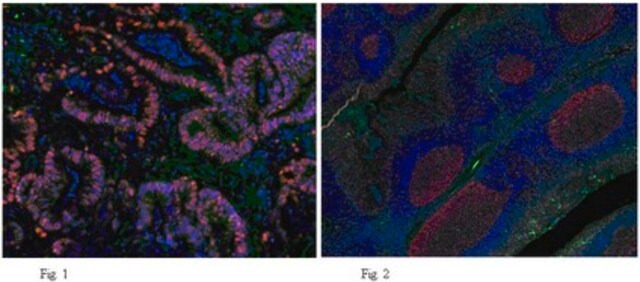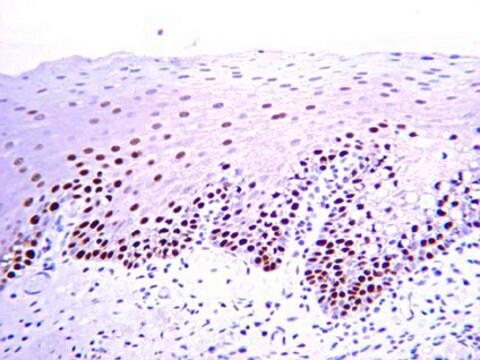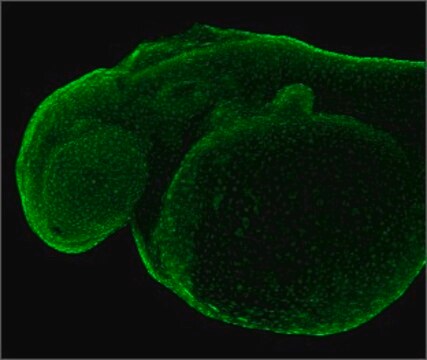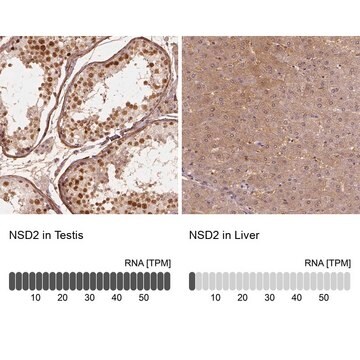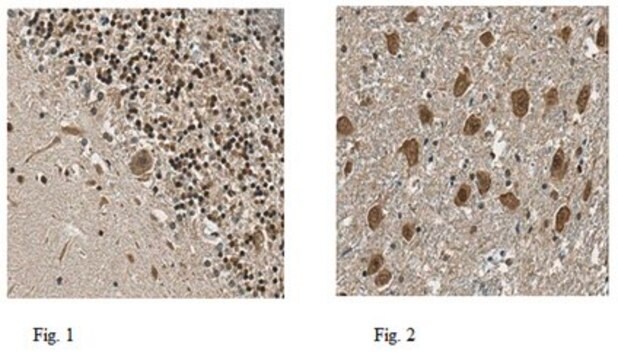推荐产品
生物源
mouse
品質等級
抗體表格
purified antibody
抗體產品種類
primary antibodies
無性繁殖
PC10, monoclonal
物種活性
vertebrates, invertebrates
製造商/商標名
Chemicon®
技術
ELISA: suitable
flow cytometry: suitable
immunohistochemistry: suitable (paraffin)
immunoprecipitation (IP): suitable
western blot: suitable
同型
IgG2a
NCBI登錄號
UniProt登錄號
運輸包裝
wet ice
目標翻譯後修改
unmodified
基因資訊
human ... PCNA(5111)
一般說明
Proliferating cell nuclear antigen (UniProt: P04961; also known as PCNA) is encoded by the Pcna gene (Gene ID: 25737) in rat. PCNA is a homotrimeric nuclear protein that serves as an auxiliary protein of DNA polymerase delta and is involved in the control of eukaryotic DNA replication by increasing the polymerase′s processability during elongation of the leading strand. It Induces a robust stimulatory effect on the 3′-5′ exonuclease and 3′-phosphodiesterase, but not apurinic-apyrimidinic (AP) endonuclease, APEX2 activities. It is reported to colocalize with CREBBP, EP300 and POLD1 to sites of DNA damage. It acts as a loading platform to recruit DDR proteins that allow completion of DNA replication after DNA damage and promote post-replication repair. PCNA can undergo phosphorylation on tyrosine 211 by EGFR that stabilizes chromatin-associated PCNA. Following DNA damage, it can undergo monoubiquitination to stimulate direct bypass of DNA lesions by specialized DNA polymerases or polyubiquitination to promote recombination-dependent DNA synthesis across DNA lesions by template switching mechanisms. Mutations in PCN gene are known to cause Ataxia-telangiectasia-like disorder 2 (ATLD2) that is characterized by developmental delay, ataxia, hearing loss, and short stature.
特異性
Clone PC10 recognizes PCNA from all vertebrate and insect species tested and has been used to identify transformed cells (Kurki, 1988), proliferating cells in solid tumors (Smetana, 1983), and blast cells in leukemia patients (Takasaki, 1984). Immunohistochemistry with clone PC10 has been used to study the expression of PCNA in paraffin sections of normal tissues and lymphoid neoplasms (Hall, 1990). In proliferating cells, PCNA staining pattern is predominantly nuclear. By western blot, the antibody detects a polypeptide migrating at 36 kDa with an isoelectric point of 4.8.
免疫原
Rat PCNA induced in the Protein A expression vector pR1T2T.
應用
Anti-PCNA Antibody, clone PC10 is a mouse monoclonal antibody for detection of PCNA also known as Proliferating Cell Nuclear Antigen, DNA Polymerase delta Processivity Factor & has been validated in ELISA, FC, IP, WB,IHC(P).
Research Category
Epigenetics & Nuclear Function
Epigenetics & Nuclear Function
Research Sub Category
Cell Cycle, DNA Replication & Repair
Cell Cycle, DNA Replication & Repair
外觀
Format: Purified
The monoclonal is presented at a concentration of 100μg/1mL in phosphate buffered saline containing 10mM sodium azide and 1mg/ml bovine serum albumin. We recommend that each laboratory determine an optimum working titre for use in its particular application.
儲存和穩定性
For use within 1 month of purchase store at +4°C, for long term storage aliquot antibody into small volumes and store at -20°C. Avoid repeated freeze/ thawing.
分析報告
Control
POSITIVE CONTROL: Tonsil or reactive lymph node.
POSITIVE CONTROL: Tonsil or reactive lymph node.
其他說明
Concentration: Please refer to the Certificate of Analysis for the lot-specific concentration.
法律資訊
CHEMICON is a registered trademark of Merck KGaA, Darmstadt, Germany
免責聲明
Unless otherwise stated in our catalog or other company documentation accompanying the product(s), our products are intended for research use only and are not to be used for any other purpose, which includes but is not limited to, unauthorized commercial uses, in vitro diagnostic uses, ex vivo or in vivo therapeutic uses or any type of consumption or application to humans or animals.
未找到合适的产品?
试试我们的产品选型工具.
儲存類別代碼
12 - Non Combustible Liquids
水污染物質分類(WGK)
WGK 2
閃點(°F)
Not applicable
閃點(°C)
Not applicable
Disruption of Tacc3 function leads to in vivo tumor regression.
R Yao,Y Natsume,Y Saiki,H Shioya,K Takeuchi,T Yamori,H Toki,I Aoki,T Saga,T Noda
Oncogene null
BLIMP1 is required for postnatal epidermal homeostasis but does not define a sebaceous gland progenitor under steady-state conditions.
Kretzschmar, K; Cottle, DL; Donati, G; Chiang, MF; Quist, SR; Gollnick, HP; Natsuga et al.
Stem Cell Reports null
Genomic organization, transcriptomic analysis, and functional characterization of avian ?- and ?-keratins in diverse feather forms.
Ng, CS; Wu, P; Fan, WL; Yan, J; Chen, CK; Lai, YT; Wu, SM; Mao, CT; Chen, JJ; Lu, MY; Ho et al.
Genome Biology and Evolution null
Michael W Hughes et al.
The Journal of investigative dermatology, 134(1), 24-32 (2013-06-25)
Histone deacetylases (HDACs) are present in the epidermal layer of the skin, outer root sheath, and hair matrix. To investigate how histone acetylation affects skin morphogenesis and homeostasis, mice were generated with a K14 promoter-mediated reduction of Hdac1 or Hdac2.
Immunohistochemical detection of proliferating cell nuclear antigen in solid human malignancies.
Robbins, B A, et al.
Archives of Pathology & Laboratory Medicine, 111, 841-845 (1987)
我们的科学家团队拥有各种研究领域经验,包括生命科学、材料科学、化学合成、色谱、分析及许多其他领域.
联系技术服务部门